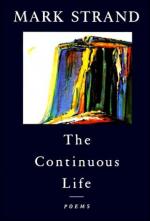|
This section contains 302 words (approx. 1 page at 400 words per page) |

|
Didactic Structure
"The Continuous Life" is a didactic poem. Didactic poems seek to teach the reader about a subject through explanation and examples. Examples of didactic poetry include Geoffrey Chaucer's "The Parson's Tale" and Alexander Pope's "Essay on Criticism." The purpose of Strand's poem is to teach parents how to interact with their children. The assumption behind the poem is that parents do not tell their children what life is really like. They ignore difficult to explain ideas such as the quest for meaning, the chaos of daily life, the doubts and fears that hound one's actions, and death because they are unsure of themselves and how to proceed. The speaker's tone is encouraging but urgent, underscoring the point that death can come any moment.
Imagery
Imagery refers to the language writers use to convey a picture or relay an experience. Strand uses both concrete and abstract imagery in...
|
This section contains 302 words (approx. 1 page at 400 words per page) |

|




